Hair Transplant in Thailand
Search and Compare the Best Clinics and Doctors at the Lowest Prices for Hair Transplant in Thailand
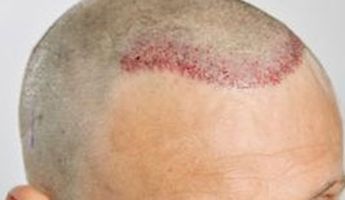
Find the best clinics for Hair Transplant in Thailand
With Medijump you can browse 45 facilities offering Hair Transplant procedures in Thailand. The cheapest price available is $1,945 in Bangkok. And for the cheapest price globally, prices start from $126 in Egypt.
Hair Transplant in Bangkok
Price: $ 1,945
Hair Transplant in Khon Kaen
Price: $ 2,223
Egypt offers the best prices Worldwide
Price: $ 126
From 2 verified reviews
Zara, 03 June 2024
The clinic is very clean and modern. The staff took the time to explain each step of the treatment process.
From 2 verified reviews
Barry Daniels, 11 July 2024
Dr. Benz and her team were fantastic! She genuinely listened to my concerns and clearly explained how the procedure would work, including the post-op care. I truly appreciate all of you!
From 1 verified reviews
Zhisheng Fung, 22 March 2024
Great service. The doctor is skilled and careful. My wound healed quickly. The staff are friendly. Thanks to the whole team!
From 1 verified reviews
Stanley Chew, 25 November 2022
My results have been amazing. Many of my friends have said I look younger. I must say that Dr. Fon did an outstanding job. Thank you for giving me back my confidence.
From 4 verified reviews
Saoirse, 31 July 2024
HHH Natural Hair Transplant Center gave me my confidence back. The results are fantastic and the service was top-notch.
From 15 verified reviews
Mod Mod, 02 October 2022
I like the clinic very much. The laser doesn't hurt at all. The staff is very nice, good service.
From 20 verified reviews
Svana, 21 August 2024
Amazing results! The staff at Yada Aesthetics made me feel comfortable and the Botox treatment was quick and painless. Highly recommend!
From 16 verified reviews
Soren Lim, 22 August 2022
I had a breast augmentation at Jungceylon Plastic Surgery Phuket and it was an amazing experience. The doctor was so knowledgeable and made me feel so comfortable. The results were even better than I expected; my breasts look so natural and perky. I'm very happy with the results and would highly recommend Jungceylon Plastic Surgery Phuket to anyone considering a breast augmentation.
From 28 verified reviews
Hadara , 01 August 2024
The team at the clinic was amazing. They explained everything clearly and made me feel comfortable. The results exceeded my expectations. Highly recommend.
From 42 verified reviews
Ethal Villanueva, 11 March 2024
Very pleased with the hairline lowering surgery results. The staff was friendly and the clinic maintained high standards of care throughout. Really pleased i chose kamol. I saw loads of SRS patients in there and all who i spoke to raved about dr kamol
From 19 verified reviews
Hesper, 23 July 2024
Great experience! The treatment was gentle yet effective. My skin has never looked better.
From 28 verified reviews
Hadara , 24 July 2024
Amazing results! My hair looks fuller and healthier. The staff was professional and supportive throughout the entire process. Highly recommend.
From 15 verified reviews
Limbani, 28 August 2024
Excellent care and fantastic results! The staff at PPSI made me feel comfortable and supported throughout the entire process.
From 3 verified reviews
Maya, 28 August 2024
Great experience from start to finish. The arm lift has boosted my confidence so much. V Plast Clinic is the place to go!
From 13 verified reviews
Vannchi Jonathan, 07 January 2020
Great Doctor and staffs
From 88 verified reviews
Parthena, 18 July 2024
The entire team at Bangkok Hospital Pattaya was fantastic. They made my breast reduction process easy and stress-free.
ธารารินคลินิก Tararin Clinic, located in Mueang Khon Kaen, Khon Kaen, Thailand offers patients Hair Transplant procedures among its total of 21 available procedures, across 4 different specialties. The cost of a Hair Transplant procedure ranges from ฿80,000 to ฿160,000, whilst the national average price is approximately ฿167,213. There are many specialists available at the Clinic, with 8 in total, and they are not accredited by any recognized accreditations institutes
BEQ Clinic, located in Bang Rak, Bangkok, Thailand offers patients Hair Transplant procedures among its total of 7 available procedures, across 4 different specialties. Currently, there's no pricing information for Hair Transplant procedures at BEQ Clinic, as all prices are available on request only, whilst the national average price is approximately ฿167,213. There is currently a lack of information available on the specialists practicing at the Clinic, and they are not accredited by any recognized accreditations institutes
From 7 verified reviews
Brooke Coulter, 09 April 2022
My husband had 2 moles removed and it was a fab experience. Friendly, clean, calm service with a super price. So very happy we booked with Phibeauty.
From 3 verified reviews
Tamika, 03 August 2024
Dii Aesthetic Clinic exceeded my expectations. My skin has never looked better, and the entire experience was seamless.
- Home
- Thailand
Compare Before & After Photos of _procedure_photos.phpHair Transplant
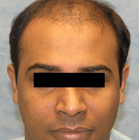
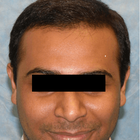
Front view
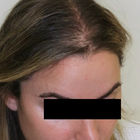
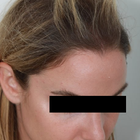
Half-side view
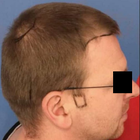
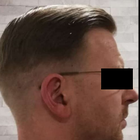
Full-side view
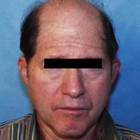
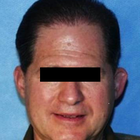
Front view
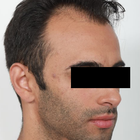
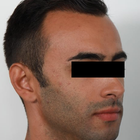
Half-side view
WHY US?
At Medijump, we're making medical easy. You can search, compare, discuss, and book your medical all in one place. We open the door to the best medical providers worldwide, saving you time and energy along the way, and it's all for FREE, no hidden fees, and no price markups guaranteed. So what are you waiting for?

Free

Best Price

Widest Selection

Risk-Free
What you need to know about Hair Transplant in Thailand

Hair Transplantation, also known as hair restoration surgery, is the surgical process of moving hair follicles from one part of the body that is rich in hair (known as a donor site) and embedding them at the the bald area of the head (recipient site). The medical course of action that aims at addressing hair loss issues and improving aesthetics. While there are many causes of hair loss, the most common reason, especially for men, is genetics. Hereditary hair loss as men age is the number one leading factor of baldness.
It is a minimally invasive procedure, performed under local anesthetic and is most commonly used to treat male baldness, but the technique can also be used to restore eyelashes, eyebrows, beard hair and to fill in scars. The procedure usually lasts between 4 to 8 hours, depending on the number of grafts needed. This procedure is a long-term solution to hair loss, with most patients experiencing significant improvement in hair growth after six months to a year.
Why do people experience hair loss?
We lose an average of 100 hairs a day, however, these hairs are immediately replaced by new hairs growing at the same time. Hair loss can occur suddenly or gradually and it may affect your scalp or your entire body, depending on what’s causing it. Other causes of hair loss may include:
- Stress - a lot of people may experience hair thinning for several months due to a physical or emotional shock. However, this type of hair loss is only temporary.
- Certain Hairstyles and treatments - hairstyles that pull your hair like tight pigtails, ponytails or braids can actually cause traction alopecia. Permanent hair treatments and hot oil treatment may also lead to hair loss; these hair treatments cause inflammation to the hair follicles. If there is scarring, hair loss may be permanent.
- Radiation Therapy - for example, during cancer treatment.
- Certain medical conditions and hormonal changes - in women, hormonal changes due to pregnancy, childbirth menopause or thyroid problems may cause temporary or permanent hair loss. As for medical conditions, hair loss may be due to alopecia, scalp infections like ringworm or a hair-pulling disorder known as trichotillomania.
Sudden hair loss may also be a sign of a specific medical condition that will require treatment. You will need to consult your doctor if you experience more than your usual hair loss whenever you are combing or washing your hair and also if you encounter a sudden patchy loss of hair.
A hair transplant is a common treatment performed on people who are experiencing baldness due to aging and heredity factors. However, if you are completely bald with absolutely no hair left, then this type of treatment may not be applicable for you, as you won't have sufficient donor hair to supply.
What is the cost of Hair Transplant in Thailand?
The cost of Hair Transplant in Thailand is typically influenced by various factors. These may include the experience and reputation of the surgeon, the complexity of your case, and the total number of grafts needed. Moreover, the pricing strategy followed by the medical establishment also plays a significant role. Some clinics charge based on the number of grafts transplanted, while others might price the procedure as a package. The exact price can therefore only be determined in consultation with a trusted clinic. While it can appear costly to some, the Hair Transplant is an investment in one's appearance and self-confidence.
What Does The Procedure Involve?
The hair transplant procedure involves taking hair from your Donor Site and transferring it to the area(s) lacking in hair, the Recipient Site, and a local anesthetic will be applied before the procedure begins to limit any discomfort.
There are two main methods used in a hair transplant procedure:
- Follicular Unit Transplantation (FUT) - strips of tissue will be removed from your donor area, these strips will be cut into individual follicular units. Small cuts will be made on your scalp where the follicular unit grafts will be placed. This method is becoming less popular.
- Follicular Unit Extraction (FUE) - individual hair follicles will be directly extracted from your donor area and moved to your recipient site using a specialist microsurgical needle. FUE is now the preferred technique for hair transplants as it will not leave a linear scar at the back of the head.
Procedures are undertaken by a fully qualified technician and usually involve the extraction of around 3,000 grafts, going up to 4,000. Any more, and it will likely require two separate sittings to complete.
How Long Should I Stay in Thailand for a Hair Transplant Procedure?
Hair transplants are usually performed as an outpatient procedure. Thus, you will be able to go back to your hotel immediately after. Both methods used for Hair Transplant treatments usually take 4-8 hours to complete. With FUE technique, there are no stitches or staples to be removed, so you won't need to stay in Thailand for long after the procedure, just allow a day or two to be sure before traveling home.
You should expect to pay the clinic another visit the day after the treatment so the doctor can remove the bandage, examine the areas of intake and transplantation of follicles, before washing your hair using a special technique that you will learn to perform by yourself. Finally, the doctor will provide you with a special shampoo that will help to restore the skin.
What's the Recovery Time for Hair Transplant Procedures in Thailand?
Your scalp will continue to be sensitive to pain for a few days, during which time you should continue to take the medications provided by the doctor. On top of the pain killers and anti-inflammatory meds, you may also be given antibiotics to lessen the risk of infection, as uncommon as this may be.
You should expect to return to work and your daily routine, including exercise, after 5 days. However, the signs of a hair transplant will remain for at least another 2-3 weeks, at which point the newly transplanted hairs will start to fall out - but don't be alarmed! This is to be expected as you've just had a follicle extraction, so dead hair will simply make way for new hair over the coming weeks and months.
If the average person's hair only grows at a centimeter per month, then it will take some time before you can wear your hair long again. You could expect to display short and consistent hair just 4-6 weeks after the treatment.
What sort of Aftercare is Required for Hair Transplant Procedures in Thailand?
After the procedure is complete, anti-swelling medication and painkillers will be available and you'll be provided with various essentials to see you through the days immediately following. Post-op items may include; specialist shampoo, lotion, multivitamins, a special hat, a headband, neck pillow, and wound dressing.
Having already been provided with your post-op aftercare products, you may also be offered Platelet Rich Plasma (PRP) Therapy to help stimulate the hair follicles and encourage hair growth. This is where a small amount of blood is taken, rich in plasma, which is then injected into the Recipient Site.
What's the Success Rate of Hair Transplant Procedures in Thailand?
The success rate for hair transplants is one of the highest, at 98% and is considered the only truly effective remedy for hair loss.
The effectiveness of Hair Transplant treatments is significantly shaped by the surgeon's expertise who executes the process. A seasoned and competent surgeon employs sophisticated methods to prevent harm to the transplanted hair follicles during the process, which leads to a higher likelihood of success. Additionally, the ability of the surgeon to place the grafts in an attractive manner that resembles natural hair growth further enhances the perceived successfulness of the result.
Beyond the competency of the surgeon, the overall health status and lifestyle choices of the patient greatly impact the treatment's effectiveness. Subpar habits such as excessive smoking and alcohol intake can obstruct the recovery process and influence the result adversely. Illnesses like diabetes can also interfere with the likelihood of success.
Consideration of the donor hair's quality is another aspect that may affect the success of the procedure. Generally, those with robust, plentiful hair in the donor region have a higher success rate as compared to individuals with sparse or poor-quality hair. The availability of more follicles for transplantation yields better results. A detailed examination is carried out before the Hair Transplant to verify the quantity and quality of the donor's hair.
Are there Alternatives to a Hair Transplant?
Laser therapy is one alternative to a hair transplant. During this procedure, a low-level laser device will be used as a treatment for a hair loss specifically caused by genetics. This low-level laser with a wavelength of 650 nanometres can actually stimulate your hair growth. However, long term effects for this type of alternative still remains uncertain.
PRP Therapy is another alternative you can consider. This type of treatment will make use of your own blood to promote hair growth. Your blood will be spun in a centrifuge to separate your blood’s plasma component from your red and white blood cells. Plasma contains many growth factors that promote hair growth when injected into the scalp.
Other non-surgical alternatives could include simply shaving all your hair off, trying other hairstyles or using a wig or hairpiece.
How do FUT and FUE Compare?
The two most common techniques used are the Follicular Unit Transplant (FUT) and the Follicular Unit Extraction (FUE). How do they compare?
1. FUT, also referred to as FUSS (Follicular Unit Strip Surgery), involves the removal of a strip of skin from the back of the head containing lots of hair follicles, which is stitched up and hidden by the surrounding hair. Then the strip of follicles is divided into 500-2,000 tiny grafts containing just a few hairs. These are then embedded across the bald area of the head.
2. FUE does not require a strip of skin to be removed, instead, the hair follicles are individually removed from the donor site and positioned across the bald area in tiny slits created by a scalpel or needle.
What are the Risks Associated with Hair Transplant?
Like any surgical procedure, Hair Transplant carries certain risks, although they are relatively rare and usually minor if performed by a skilled and experienced surgeon.
Some potential risks and side effects could include:
- Scarring is the most common side effect (only applicable to FUT)
- Infections
- Temporary loss of sensation around the surgical sites
- Inflammation of hair follicles (folliculitis)
- Temporary scalp pain, itching, and swelling.
- Unnatural-looking hair growth
Whilst the information presented here has been accurately sourced and verified by a medical professional for its accuracy, it is still advised to consult with your doctor before pursuing a medical treatment at one of the listed medical providers
No Time?
Tell us what you're looking for and we'll reachout to the top clinics all at once
Enquire Now

Popular Procedures in Thailand
Prices Start From $153

Prices Start From $500

Prices Start From $4

Prices Start From $500

Recommended Medical Centers in Thailand for Hair Transplant

- Interpreter services
- Translation service
- Religious facilities
- Medical records transfer
- Medical travel insurance
- Health insurance coordination
- TV in the room
- Safe in the room
- Phone in the room
- Private rooms for patients available

- Interpreter services
- Translation service
- Religious facilities
- Medical records transfer
- Medical travel insurance
- Health insurance coordination
- TV in the room
- Safe in the room
- Phone in the room
- Private rooms for patients available

- Interpreter services
- Translation service
- Religious facilities
- Medical records transfer
- Medical travel insurance
- Health insurance coordination
- TV in the room
- Safe in the room
- Phone in the room
- Private rooms for patients available

- Interpreter services
- Translation service
- Religious facilities
- Medical records transfer
- Medical travel insurance
- Health insurance coordination
- TV in the room
- Safe in the room
- Phone in the room
- Private rooms for patients available

- Interpreter services
- Translation service
- Religious facilities
- Medical records transfer
- Medical travel insurance
- Health insurance coordination
- TV in the room
- Safe in the room
- Phone in the room
- Private rooms for patients available

- Interpreter services
- Translation service
- Religious facilities
- Medical records transfer
- Medical travel insurance
- Health insurance coordination
- TV in the room
- Safe in the room
- Phone in the room
- Private rooms for patients available

- Interpreter services
- Translation service
- Religious facilities
- Medical records transfer
- Medical travel insurance
- Health insurance coordination
- TV in the room
- Safe in the room
- Phone in the room
- Private rooms for patients available

- Interpreter services
- Translation service
- Religious facilities
- Medical records transfer
- Medical travel insurance
- Health insurance coordination
- TV in the room
- Safe in the room
- Phone in the room
- Private rooms for patients available

- Interpreter services
- Translation service
- Religious facilities
- Medical records transfer
- Medical travel insurance
- Health insurance coordination
- TV in the room
- Safe in the room
- Phone in the room
- Private rooms for patients available

- Interpreter services
- Translation service
- Religious facilities
- Medical records transfer
- Medical travel insurance
- Health insurance coordination
- TV in the room
- Safe in the room
- Phone in the room
- Private rooms for patients available
Hair Transplant in and around Thailand
About Thailand
Thailand is consistently voted one of the most popular travel destinations in the world, leading the way for Asian countries with over 60 state-of-the-art JCI-accredited facilities. The country is renowned for its tropical beaches, floating markets, stunning royal palaces, and Buddhist temples. The vibrant capital, Bangkok, blends tradition and modernity with its ultramodern cityscape featuring brand-new high-rise condominiums side-by-side with quiet, serene canalside communities. As per the Tourism Authority of Thailand, Phuket, Koh Samui, Chiang Mai, Hua Hin, and Pattaya are the most sought-after tourist spots outside Bangkok, each boasting excellent yacht chartering opportunities.
Each year, Thailand opens its doors to hundreds of thousands of medical tourists. These individuals traverse the globe to receive treatment, with a significant number hailing from the local SE Asia region, Australia, the United States, and the Middle East. Recently, there has been an upsurge in the number of visitors coming in from China for medical purposes.
The reasons for Thailand's popularity as a medical tourism destination are its outstanding private healthcare system, attractive tropical climate, and competitive pricing. In the list of top medical tourism destinations worldwide, Thailand currently holds the third position. The procedures that attract most patients are cosmetic surgeries, including breast augmentations, gender reassignment surgery, and CoolSculpting, along with cardiac surgery, orthopedics, and urology.
Popular Parts of Thailand
Thailand, with a population of just under 70 million people spread over an area of around 500,000 square kilometers, has several regions and cities that are widely popular with both natives and tourists. Offering a diverse blend of urban and rural experiences, beach life and inland natural beauty, each part of Thailand offers a unique angle into the rich and complex Thai culture.
Arguably the most popular area of Thailand is the capital city, Bangkok. Consistently ranked as one of the most visited cities in the world, Bangkok is an ever-buzzing urban hub with its busy streets, modern lifestyle, magnificent temples and opulent palace, alongside a pulsating nightlife. This city is typically the entry gateway for a vast majority of the 30 million tourists who visit Thailand each year. Known for its glimmering cityscape and vibrant food scene, Bangkok is indeed a compulsory stop in every traveler's itinerary.
While Bangkok is the country's urban heart, there's more to Thailand than just its capital. Among the other popular regions are the beachside island paradise of Phuket and Koh Samui, the city of Pattaya, and Hua Hin - each of them a haven for beach lovers and anyone seeking a laid-back vibe away from bustling city life. However, for those who prefer the call of the inland and a dash of adventure, Chiang Mai, nestled in the lush jungles of northern Thailand offers a refreshing and unique proposition with its derivative local culture, serene temples and interaction with native wildlife.
Weather and Climate in Thailand
Known for its truly tropical climate and scorching temperatures, Thailand, in general, is hot and humid all year round. The coastal locations do benefit from the cooling sea breeze, a luxury urban Bangkok is denied. Average temperatures range from 28°C (82°F) up to 35°C (95°F). However, during the Hot Season (March to June), temperatures can top 40°C (104°F).
The infamous Rainy Season tends to start in July and continue through to October; during this time expect heavy rainfall, often amounting to flooding in some areas. It will remain warm to hot but humidity levels will rise and the mosquitos will come out to play!
November to February is often referred to as the Cool Season when less rain is expected and the temperatures tend not to rise above 35°C (95°F).
From a tourist perspective; the High Season lasts from November to March and the Low Season from April to October. But be aware of the Shoulder Seasons of April to June and September to October, when Thailand is less impacted by the Rainy Season and less busy with tourists – these can be the ideal times to visit.
In a nutshell, Thailand is a Shorts and T-shirt Country, you’re never really going to be cold, so pack light; shorts, t-shirts, vests, skirts, singlets, and light dresses. Maybe pack jeans and shoes if you’re planning on going to a swanky roof-top bar in Bangkok or to a temple where flip-flops are not acceptable.
Don’t forget mosquito spray as the little pests can get everywhere; big ones and little ones! Always protect against the sun; with high factor sunscreen and UV-protective sunglasses. The usual medications found at home should be available in most pharmacies.
Getting around in Thailand
With the Suvarnabhumi International Airport being serviced by some of the world’s major airlines, tourists can fly into Thailand from almost anywhere in the world, sometimes with a connection along the way. All the popular regions have their own international airports, with the exception of Pattaya, which is just a 90-minute taxi ride from Bangkok. However, arrival destinations are slightly limited outside of Bangkok, but the likes of Emirates and Qatar Airways will fly into Phuket International Airport. The rest, mostly fly in from local countries on budget airlines, including Scoot, SilkAir, AirAsia, and Lion Air to name a few.
For domestic flights, the airports are nicely linked in Thailand with flights from as little as $45 USD one way. There are several budget airlines servicing these routes, including Thai Lion Air, AirAsia, Nok Air, Thai Airways, Bangkok Airways, and Thai Smile.
The train allows for even cheaper travel within Thailand and is far more comfortable than spending hours sitting on a bus. Bangkok has the BTS, or Skytrain, which allows for fast transfer from the airport into the city. Given the traffic in central Bangkok, the BTS offers a great alternative to being stuck in traffic jams.
Taxis are great, however, be sure to confirm the price before you begin your journey or better still, insist the ride goes on the meter – that is how you guarantee the cheapest and fairest price. But expect traffic in the city and any built-up areas.
Tourist Visas in Thailand
Before you travel to Thailand, it is important to stay updated with the latest visa requirements. While a number of countries are eligible for visa-free entry, the rules can sometimes shift, making it essential to verify before you travel.
If you are travelling from countries like the United Kingdom, the United States, Germany, Australia, Singapore, Canada, France, Italy, Japan, New Zealand, and South Korea can enjoy a stay of up to 30 days in Thailand without needing a visa. On the other hand, if you are visiting from China, India, Myanmar, Laos, Cambodia, Bhutan, Nepal, Bangladesh, Sri Lanka, Pakistan, and Uzbekistan, you will be granted the facility of a visa on arrival.
To get a visa on arrival here are the requirements:
1. You need to have a valid passport with at least 6 months of remaining validity.
2: You would need to show proof of a round-trip ticket within 30 days and confirmation of your accommodation for the first night in Thailand.
3. You need to demonstrate that you have sufficient funds for your visit, which is 10,000 THB per person or 20,000 THB per family.
Don't forget to carry a recent passport-sized photograph. The fee for a visa on arrival is 2,000 THB, and you can pay it via cash or credit card.
For more information, click here.
Additional Information
- The Thai Baht (THB) is the local currency. 1 USD is approximately around 34.5559 on average as of 2023.
- ATMs are readily available across Thailand and accept virtually all major bank cards (Visa, Mastercard). Credit card payment is accepted in most established restaurants and outlets, with the more local food vendors, for example, only accepting cash.
- Thai is the local language but due to the extremely well-established tourism industry in Thailand, English is spoken by most locals who work with tourists, and often signs will have an English translation.
- Buddhism is the primary religion in Thailand, with a large Muslim population in the south. The Royal Family is deeply revered throughout the country and should never be disrespected.
- There are many public holidays in Thailand, which aren’t always on the same day each year, including Songkran (Thai New Year), which is celebrated in mid-April, Labor Day, and Coronation Day in early May, Asanha Buja in July and Constitution Day in December.
Popular Searches
- Plastic Surgery in Thailand
- Dental Implants in Thailand
- Hair Transplant in Thailand
- Breast Augmentation Thailand
- Gastric Sleeve in Thailand
- Gender Reassignment Surgery in Thailand
- Laser Hair Removal in Bangkok
- Botox in Bangkok
- Dermatology in Bangkok
- Breast Augmentation in Bangkok
- Coolsculpting in Bangkok
- Veneers in Turkey
- Hair Transplant in Turkey
- Rhinoplasty in Turkey
- Stem Cell Therapy in Mexico
- Rhinoplasty in Mexico
- Liposuction in Mexico
- Coolsculpting in Tijuana
- Rhinoplasty in Korea
- Scar Removal in Korea
- Gastric Sleeve in Turkey
- Bone Marrow Transplant in India
- Invisalign in Malaysia
- Plastic Surgery in the Dominican Republic
- Tummy Tuck in the Dominican Republic
- Plastic and Cosmetic Surgery in Poland
- Rhinoplasty in Poland
- Hair Implant in Poland
- Dental Implants in Poland
- IVF in Turkey



















